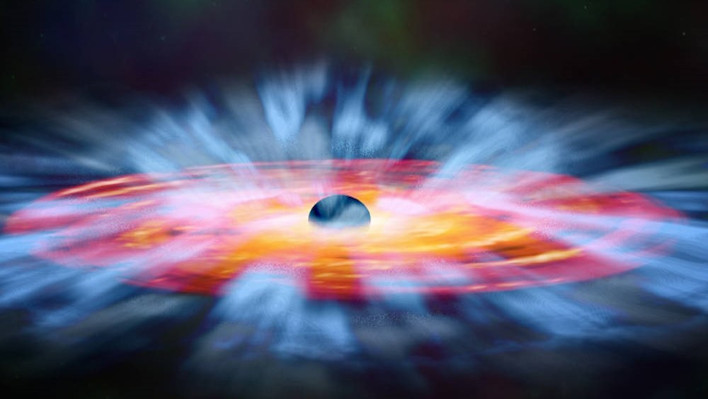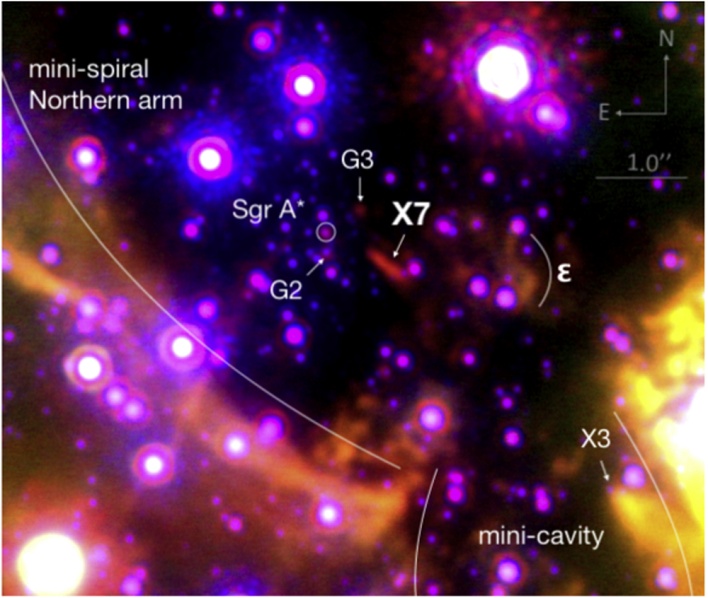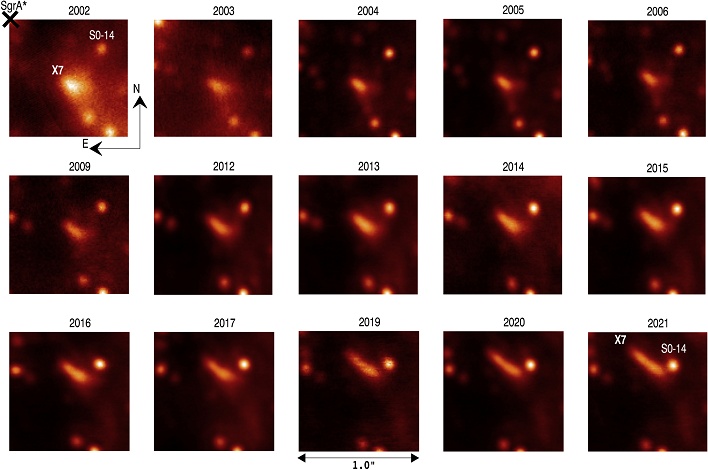A Mammoth Black Hole Is Tearing Apart A Gassy Dust Cloud And Astronomers Expect Fireworks

Since 2002, astronomers have watched X7 and how it has morphed during that time period as it orbits the supermassive black hole. They view the opportunity as a unique chance at seeing the effects of Sgr A*'s tidal forces at high resolution and providing them insight into the "physics of the Galactic Center's extreme environment," according to Anna Ciurlo, a UCLA assistant researcher and lead author of the study.

X7 in context: gas and dust structures in the Galactic Center.
"It's exciting to see significant changes of X7's shape and dynamics in such great detail over a relatively short time scale as the gravitational forces of the supermassive black hole at the center of the Milky Way influences this object," remarked co-author Randy Campbell, science operations lead at Keck Observatory.
X7 has a mass of about 50 Earths, with an orbital path around Sgr A* that would take 170 years to complete. The cloud of dust and gas is moving at a furious pace of up to 490 miles per second, due to the extreme mass of Sgr A*. However, the astronomers do not believe X7 will ever complete a full orbit before it is torn apart by Sgr A*.
While the origin of X7 is still a mystery, the research team does have a few clues about its possible formation.
"One possibility is that X7's gas and dust were ejected at the moment when two stars merged," explained Ciurlo. "In this process, the merged star is hidden inside a shell of dust and gas, which might fit the description of the G objects. And the ejected gas perhaps produced X7-like objects."
The team plans to continue monitoring X7's journey, as Campbell adds, "This study can only be done using Keck's superb capabilities and performed at the revered Maunakea, with honor and respect for this special site."


